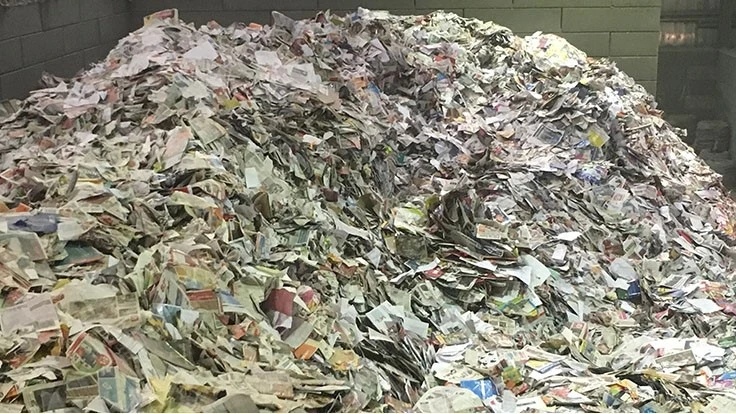
The recycling and paper industries in Europe continue to bolster the market and methods to recycle the majority of the continent’s discarded paper and board, says the Brussels-based Confederation of European Paper Industries (CEPI).
“We have had a very long-term commitment to recycling in the European paper industry,” commented CEPI Director General Jori Ringman at a CEPI virtual press conference held Thursday, July 7. “This has led to innovation and R&D that has enabled the use of recycled fibers in all key product categories,” he added.
CEPI calculated the European paper and paperboard recycling rate for 2022 at 71.4 percent. Although this figure was down from the 73.3 percent rate of 2020, it marks the third straight year the continent has produced a rate of 70 percent or higher. CEPI is part of a coalition striving to meet a 76 percent EU paper recycling rate.
Ulrich Leberle, CEPI raw materials director, remarked, “There [has been] strong investment in recycling capacities in Europe.” Added Leberle about the first loop in the paper recycling chain, “There is a strong environmental consciousness by people.”
As to the situation for paper recyclers in 2021, Leberle said there is “really strong demand for paper for recycling within Europe.” Last year, according to CEPI statistics, 50.7 million metric tons of the recovered fiber collected in Europe stayed in the CEPI trade region (the EU 27 nations, plus Norway, Switzerland and the United Kingdom).
That compares with slightly less than 5.4 million metric tons that left Europe and another 1.5 million metric tons that went to parts of Europe not represented by CEPI (consisting predominantly of Russia and other Eastern European countries).
Leberle referred to the fact that just 9.6 percent of collected recovered fiber left Europe by saying there was “a very reduced” export level in 2021.
Leberle also presented information on which grades were collected in the CEPI region in 2021. Unsurprisingly, packaging grades including old corrugated containers (OCC), other board grades and kraft paper comprised more than half (58.9 percent) of that was collected last year.
Although the mixed paper grade is closely associated with North America, 18.9 percent of the recovered fiber consumed by CEPI region mills was mixed paper. In third place, at 13.1 percent, were graphic paper grades such as old newspapers (ONP) and old magazines (OMG).
Paper and board production also points to packaging board as the dominant sector in Europe. CEPI figures summarized by Bernard Lombard, trade and industrial policy director with CEPI, shows 59.1 percent of the paper and board produced in the CEPI region last year was packaging material.
Graphic paper (not counting newsprint) accounted for another 23.5 percent, while newsprint checked in at just 4.2 percent. The tissue sector accounted for 8.6 percent of paper produced (by tonnage), while a general “other” category accounted for the balance.
Lombard referred to the summer of 2020 as a COVID-19-induced “trough” for papermakers. In 2021, he said, CEPI region output bounced back by 6.1 percent for all paper and board grades compared with the year before.
He said early 2022 also has shown signs of promise. In the first four months of this year, year-on-year output is up by 1.5 percent. Packaging output has risen 1.7 percent and graphic paper production also is up by 1.7 percent. Tissue output has risen by 1.0 percent, with Lombard saying “away from home markets are really recovering.”
Malgosia Rybak and Anna Papagrigoraki, CEPI directors focused on climate change, energy and sustainability, said the CEPI region paper and board industry has reduced its collective annual CO2 emissions by 36 percent since 2006.
Ringman expressed confidence in the industry sector’s momentum in an era where circular economy policies are front and center in EU Green Deal policies. He referred to paper and board producers entering new markets via paper being used to substitute for plastic.
These efforts are “not limited to packaging only,” Ringman said, adding that many companies with a presence in Europe want to “go beyond the legislation” in their sustainability and circular economy goals.
In summary, the CEPI director general said, “There is very strong demand for the materials we can produce.”
Latest from Recycling Today
- Orion ramping up Rocky Mountain Steel rail line
- Proposed bill would provide ‘regulatory clarity’ for chemical recycling
- Alberta Ag-Plastic pilot program continues, expands with renewed funding
- ReMA urges open intra-North American scrap trade
- Axium awarded by regional organization
- Update: China to introduce steel export quotas
- Thyssenkrupp idles capacity in Europe
- Phoenix Technologies closes Ohio rPET facility





